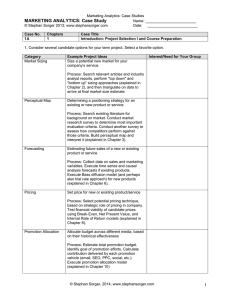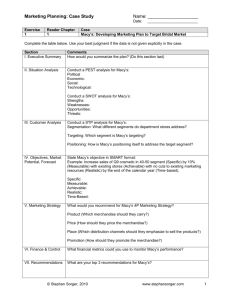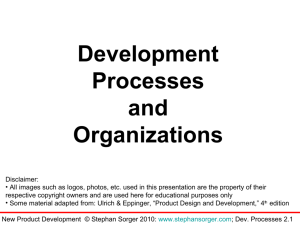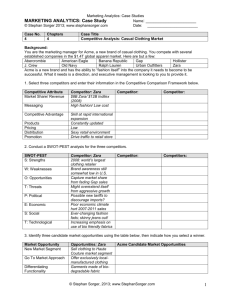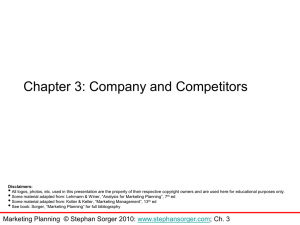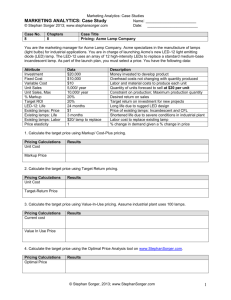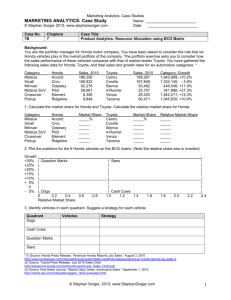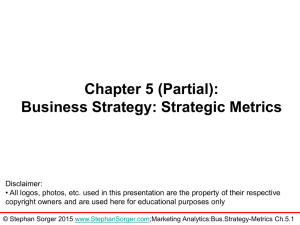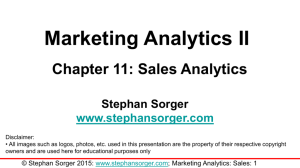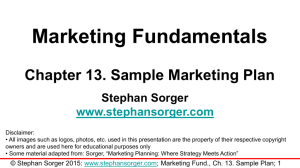Marketing Planning
advertisement
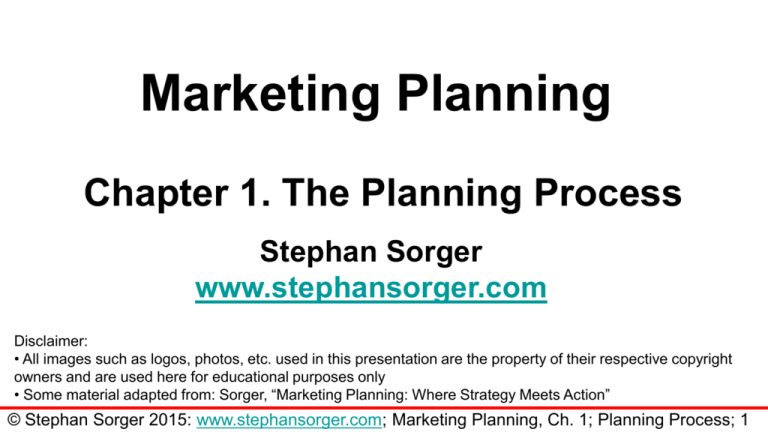
Marketing Planning Chapter 1. The Planning Process Stephan Sorger www.stephansorger.com Disclaimer: • All images such as logos, photos, etc. used in this presentation are the property of their respective copyright owners and are used here for educational purposes only • Some material adapted from: Sorger, “Marketing Planning: Where Strategy Meets Action” © Stephan Sorger 2015: www.stephansorger.com; Marketing Planning, Ch. 1; Planning Process; 1 Advantages of Good Marketing Planning Advantage Description Discipline New Opportunities Clear Competitors Clear Objectives Clear Programs Clear Responsibilities Clear Metrics Customer Focus Cross-functional Forces a disciplined approach to a market Identifies potential new opportunities Identifies potential new competitors Establishes specific objectives and targets Lays out specific programs, contributing to execution of the plan Identifies specific responsibilities throughout organization Quantifies success/failure metrics Provides new information on customers Identifies involvement by other departments © Stephan Sorger 2015: www.stephansorger.com; Marketing Planning, Ch. 1; Planning Process; 1 Cross-Functional Collaboration Professional Services Operations CrossFunctional Collaboration Finance Engineering Other © Stephan Sorger 2015: www.stephansorger.com; Marketing Planning, Ch. 1; Planning Process; 1 Impact of Organizational Functions on Marketing Plan Group Input into Marketing Plan Output from Marketing Plan Operations Cost structure for operations Sales forecast, to drive operations schedule Finance Required return on investment Financial break-even for new projects Funding required to develop new products Professional Services Implementation capabilities New products and services to implement Engineering Customer feedback Specific product features wanted by market Other Requirements by personnel Can impact HR hiring requirements © Stephan Sorger 2015: www.stephansorger.com; Marketing Planning, Ch. 1; Planning Process; 1 Marketing Planning Process Objectives Chapter 2 Strategy Marketing Mix Finance and Implementation Market Opportunities Chapter 6 Chapters 7, 8, 9, 10 Chapters 11, 12 Results Chapters 3, 4, 5 © Stephan Sorger 2015: www.stephansorger.com; Marketing Planning, Ch. 1; Planning Process; 1 Marketing Plan Outline Section Description Executive Summary Objectives Market Overview Market Segments Competitive Landscape Strategy Products/Services Price Place (Distribution) Promotion Finance Implementation Recommendations Encapsulates plan States goal of marketing plan project Determines market characteristics such as size and growth Covers market segmentation, targeting, and positioning Gathers information about company competitors Establishes approach to accomplish plan’s objectives Covers tactics to develop products and/or services Addresses pricing tactics Covers tactics to distribute organization’s products to customers Determines how to convey product benefits to market Covers financial analysis, such as break-even point Discusses tools to ensure successful execution (Optional) Includes top three most important actions to take © Stephan Sorger 2015: www.stephansorger.com; Marketing Planning, Ch. 1; Planning Process; 1 Example: Nintendo Wii: Success Step by Step Step Description Objective Increase sales through unique differentiator—interactive controller Strategies Targeting casual gamers Avoid graphics war with Microsoft and Sony Marketing Mix Compelling product User-friendly price Familiar distribution channels Promotion emphasizing unique controller Implementation $200M in marketing costs © Stephan Sorger 2015: www.stephansorger.com; Marketing Planning, Ch. 1; Planning Process; 1
